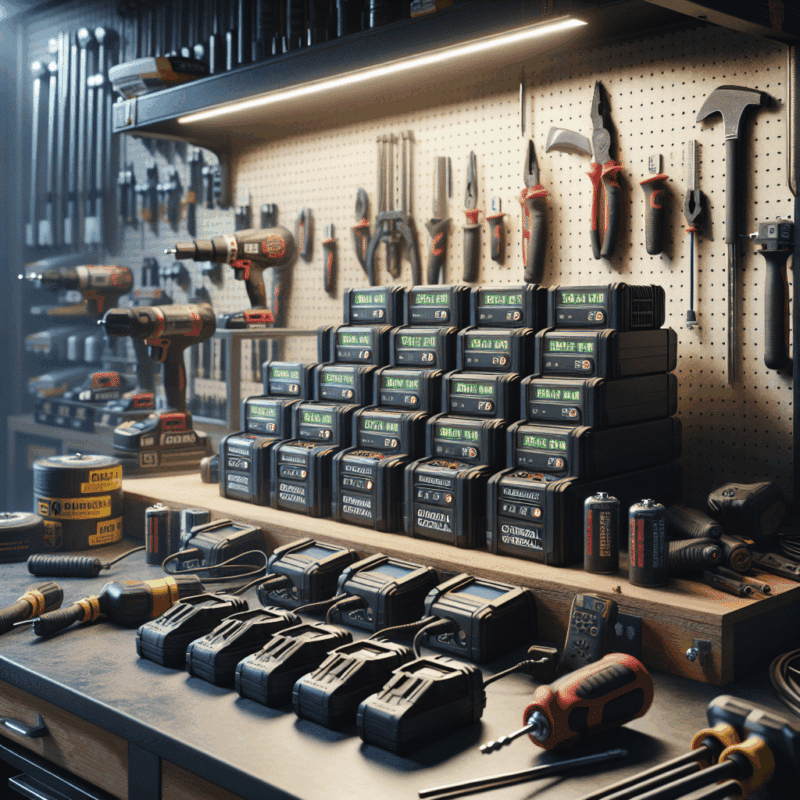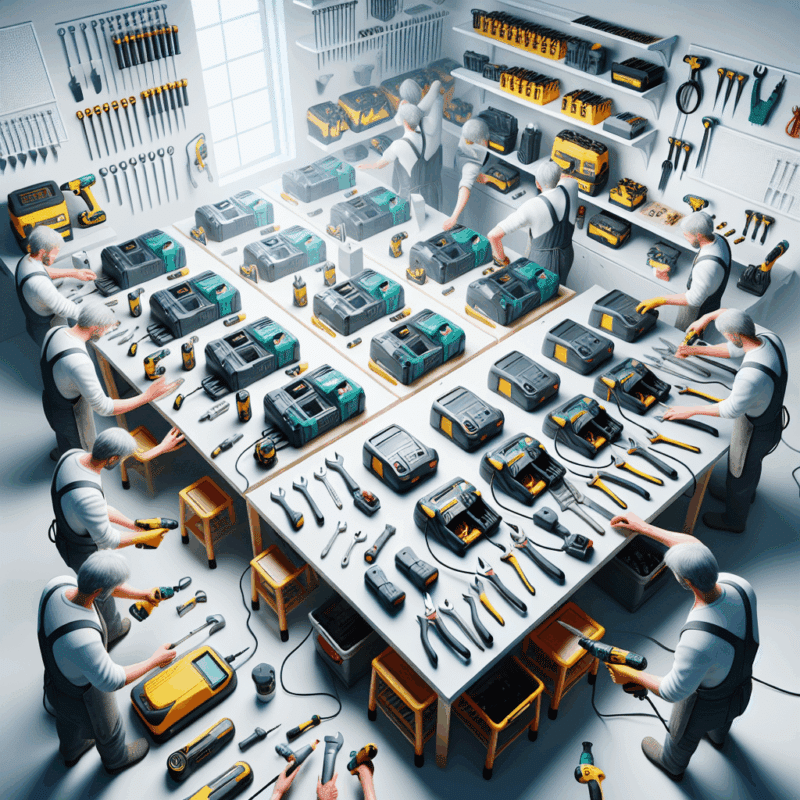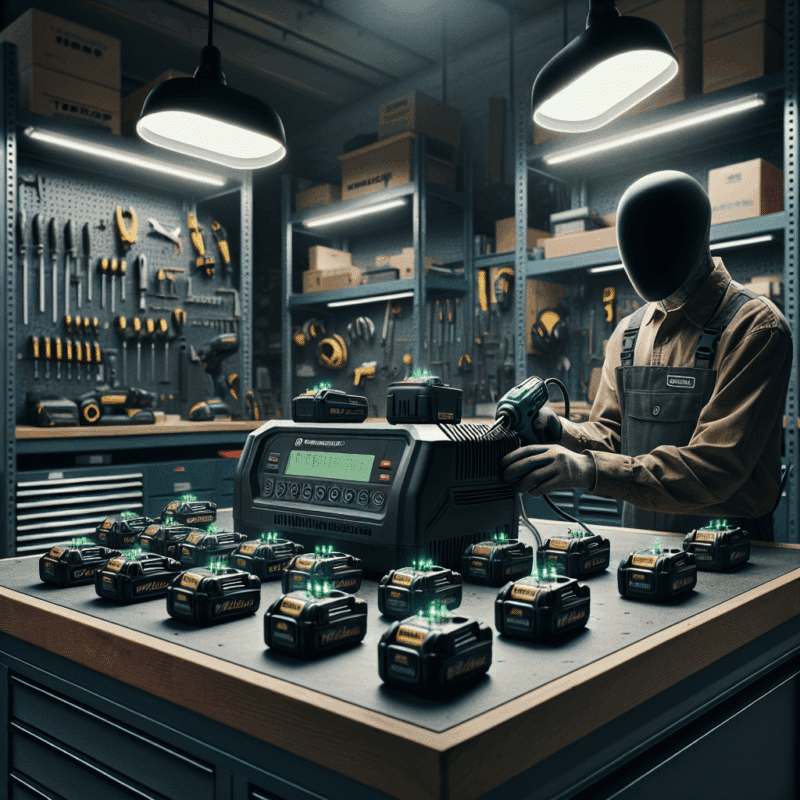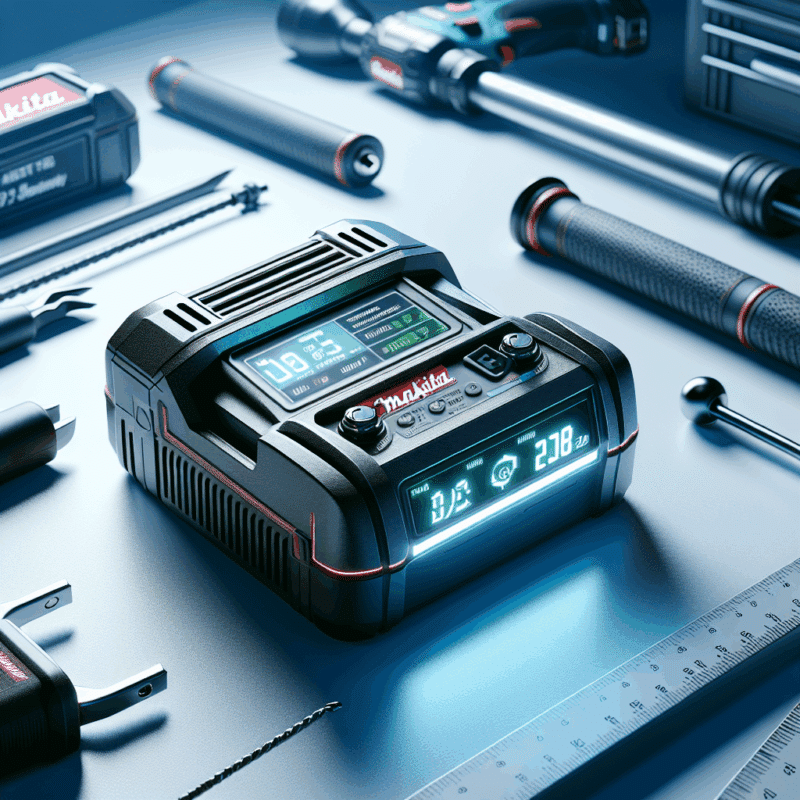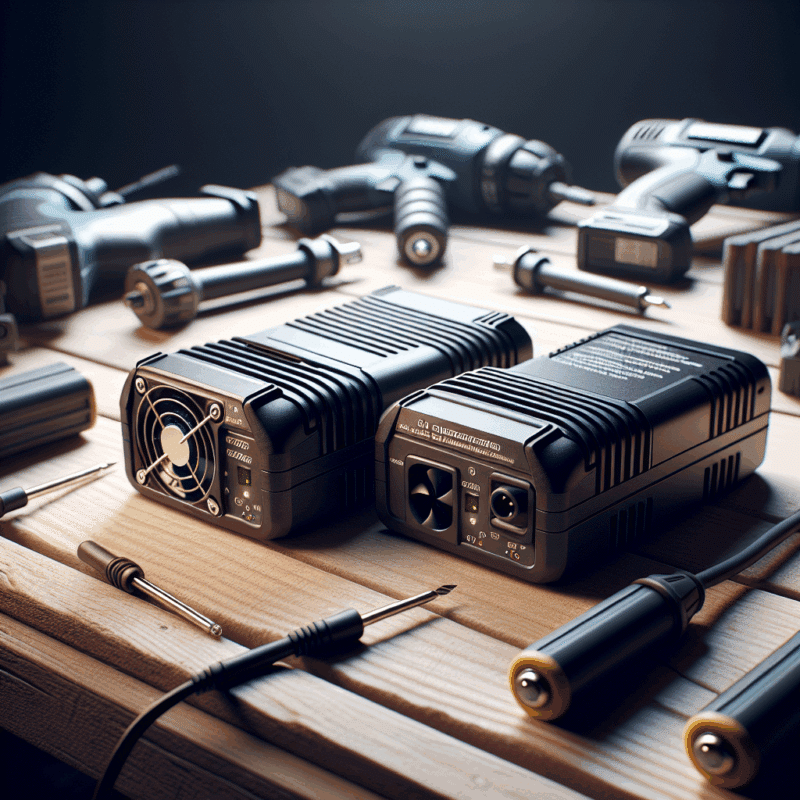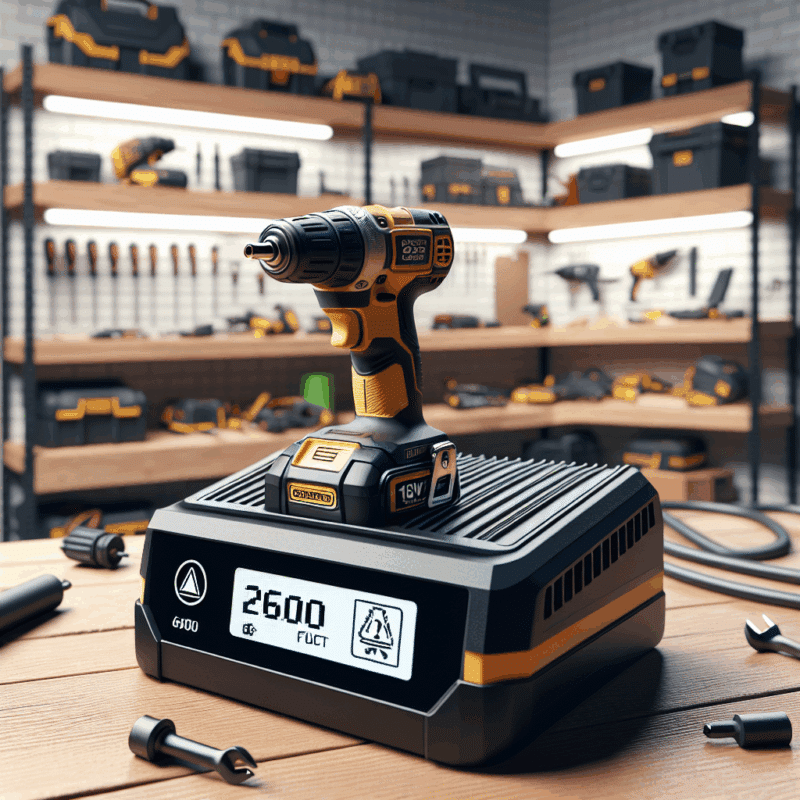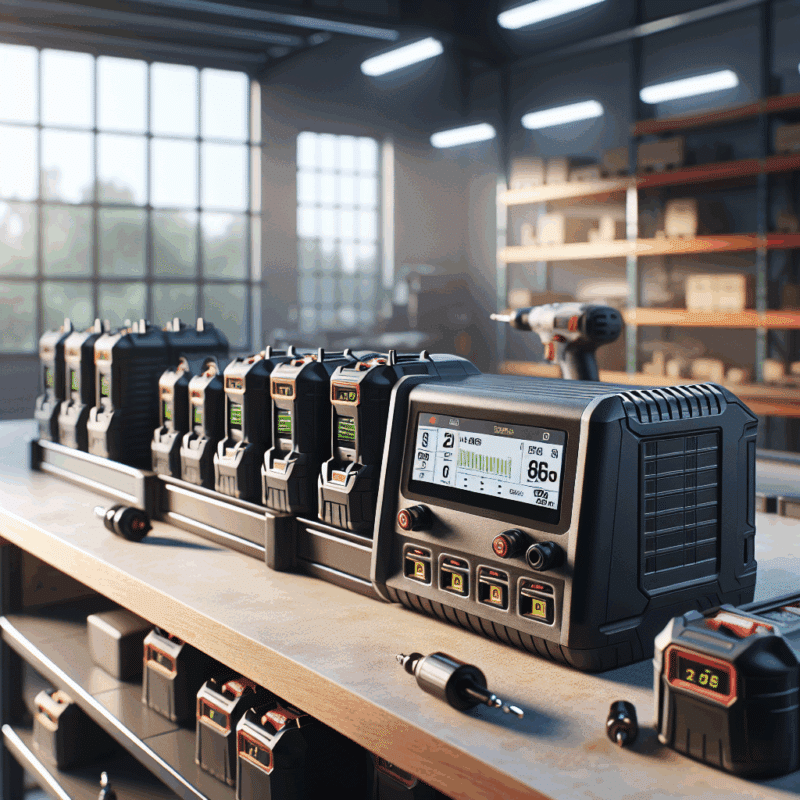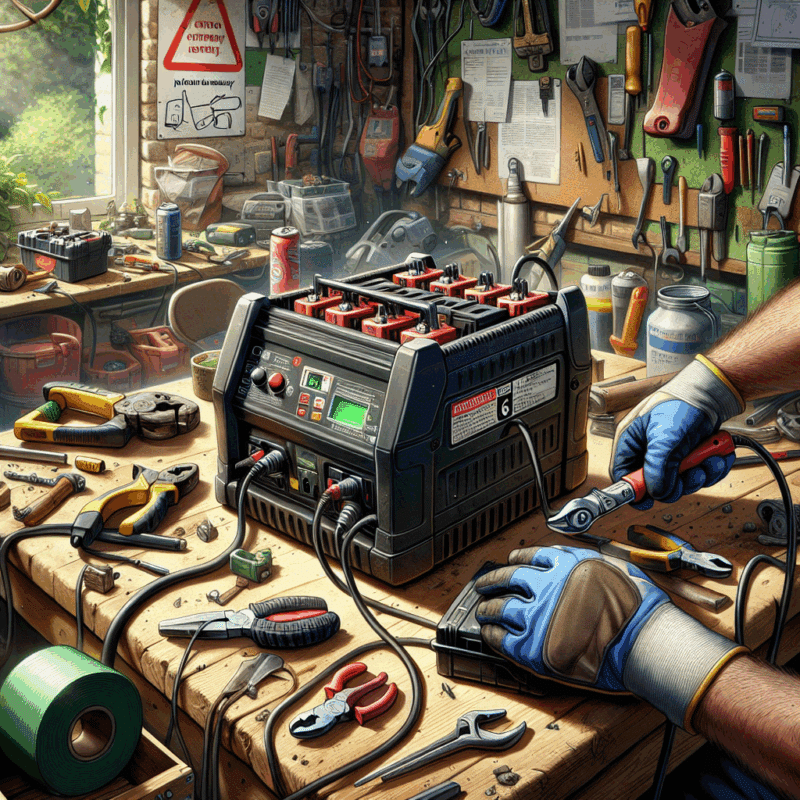From DIY to Trade: Are Premium Workshop Chargers Worth It?
In This Article
- Premium workshop chargers charge batteries faster and smarter.
- They include advanced safety mechanisms and extend battery life.
- Multi-port and cross-brand compatibility boosts workshop efficiency.
- Premium options reduce long-term costs and increase uptime.
- They’re essential for future-proofing your tool investment.
- Smart diagnostics and cooling significantly enhance safety.
- Rapid charging is safe with the right equipment.
- Premium chargers are ideal for pros and high-frequency users.
- Compare your needs before selecting a charger tier.
- Firmware updates ensure your charger adapts to evolving tech.
Why Your Workshop Deserves a Charger Upgrade
Spotting the shortcomings of standard chargers
For professionals and serious DIYers alike, investing in premium workshop chargers can profoundly elevate operational efficiency and tool reliability. Standard chargers, while sufficient for occasional or minimal use, frequently fall short when demands increase. These basic models often offer limited safety mechanisms, slower charge cycles, and inflexible compatibility with newer battery technologies. Frustration intensifies when a job stalls due to an overheated charger or a battery that failed to reach full capacity overnight.
While some budget chargers masquerade behind sleek casings, their internals often lack thermal regulation, short-circuit protection, and adaptive voltage settings. Prolonged use under stress can lead to premature deterioration of valuable battery packs, increasing long-term tool replacement costs. As power tools evolve, older chargers struggle to keep pace with manufacturer-specific battery chemistries and quick-charge protocols, leading to underperformance or even permanent battery damage.
Recognising these limitations helps workshop owners understand the essential role high-grade chargers play in a modern tool ecosystem. It’s not merely about getting power into a battery but doing so quickly, safely, and intelligently—elements where premium workshop chargers truly excel.
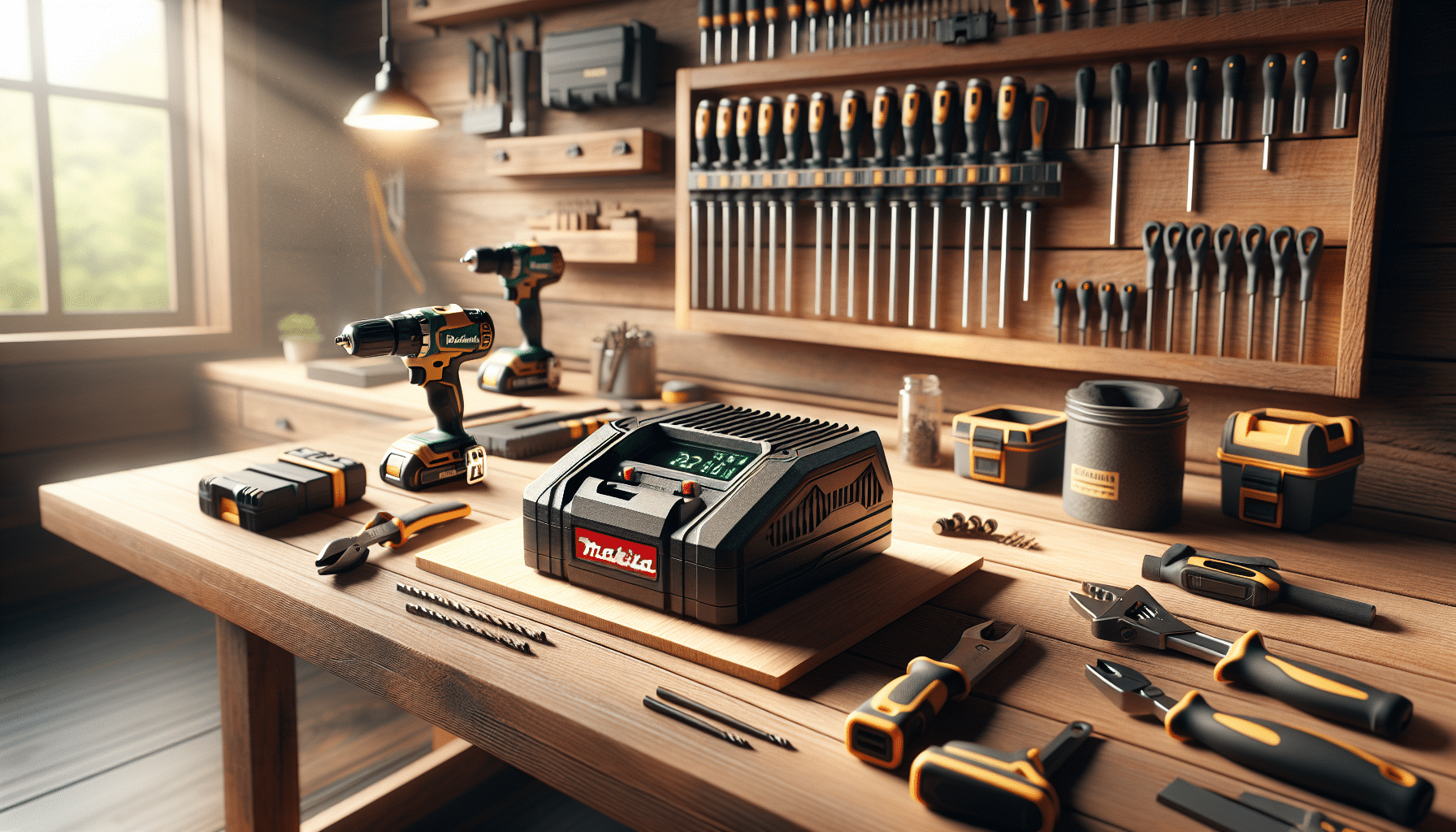
Premium Chargers: What Makes Them Worth It?
Advanced capabilities that justify the cost
Premium workshop chargers do more than recharge batteries—they redefine how efficiently your tools return to action. These advanced devices use microprocessors to monitor charging cycles in real-time, adjusting current flow depending on temperature, battery age, and cell voltage. Such smart diagnostics extend battery lifespan and ensure optimal charge without overloading or thermal runaway risks.
Many premium models are equipped with multi-bay charging setups, allowing users to juice up several batteries simultaneously. With advanced heat dissipation systems, there’s no concern about devices overheating when multiple packs are connected. Additionally, premium chargers often support multi-brand or cross-platform battery compatibility, offering flexibility to those managing mixed tool sets.
Durability is another feature often overlooked. Premium units are typically constructed with ruggedised materials, shock-resistant casings, and water-resistance ratings. Combined, these features result in a charger that not only lasts longer but maintains peak efficiency regardless of workshop conditions. Choosing premium isn’t about spending more—it’s about getting more.
DIY vs. Trade: Comparing User Needs
Usage intensity, lifespan expectations, and tool compatibility
For DIYers, using a tool battery a few times a week, a standard charger might feel ‘good enough’. However, tradespeople know that downtime costs money. Their tools must be powered day after day, often under demanding workloads. This is where premium workshop chargers prove invaluable.
The contrast lies in usage frequency and performance expectations. A DIYer might tolerate a slower charge, while a tradesperson cannot afford delays between tasks. Standard chargers also typically feature fixed compatibility with just one battery type or brand. By contrast, premium solutions often accommodate multiple voltages and battery chemistries, making them a scalable investment as tool collections evolve.
Additionally, premium chargers cater to a lifecycle approach. They reduce the risk of overcharging or heat-induced wear, preserving battery health over years of use. For heavy users, the long-term savings on replacement packs and improved uptime far outweigh the higher upfront expense. This differentiation makes premium chargers the clear professional choice.
Real-World Performance Differences
Charging times, thermal control, and battery longevity
The performance gap between standard and premium workshop chargers becomes most evident during prolonged use. Tests consistently show that premium models can recharge batteries up to 50% faster than baseline chargers. Faster charging doesn’t mean riskier charging though—thanks to intelligent power modulation and precision temperature monitoring.
Thermal management is where premium devices truly shine. Instead of passive cooling designs, high-end models use active fans and heat-sync technology to maintain optimal internal temperatures. This control keeps both the charger and the battery at safe operational levels, minimising wear caused by thermal spikes.
Effective monitoring of voltage and current ensures that batteries are charged just enough to stay healthy without being forced to full capacity every cycle—this significantly extends battery life. Over time, workshops using premium chargers report reduced battery replacement frequency and higher energy efficiency across daily operations. The quantitative and qualitative gains are undeniable.
Long-Term Value and Cost Savings
Why investing in quality pays off over time
Although premium workshop chargers involve a higher initial cost, the return on investment becomes clear over time. Reduced tool downtime, lower battery replacement rates, and minimal energy waste all contribute to increased savings. In short, it’s a matter of investment versus expense.
Standard chargers often require multiple replacements over the span of a few years. In contrast, premium devices are engineered for prolonged usage, usually backed by extended warranties and customer support. The components within high-end chargers have better heat resistance, more durable circuitry, and firmware that can be updated to support energy standards and certifications.
When tools and chargers work in harmony, their total operating costs reduce significantly. Efficiency allows workshops to quote jobs more competitively, meet tight deadlines, and reduce the time spent managing avoidable breakdowns. Choosing a premium charger is not just a technical decision—it’s a strategic one.
User Stories: How a Charger Changed My Workshop
Workflows, uptime, and unexpected benefits
In talking to a variety of professionals, we heard a recurring theme: premium workshop chargers improved not just their tools but their entire workflow. James Connelly, a commercial carpenter, said: “Switching to a rapid multi-port premium charger means all my packs are ready in under an hour. There’s no more guessing or swapping packs mid-cut.” His improved workflow directly translated to finishing jobs ahead of schedule.
Electrician Sarah Wheatley saw reduced battery pack failures after a year of using a top-tier charger. “Previously I’d replace batteries yearly. Now, I’m going on year three with the same set,” she notes happily. Several others cited quieter operation, easier wall mounting, and cleaner cable management as unexpected, yet appreciated, benefits of their charger upgrade.
Such firsthand experiences reinforce how investing in premium charging solutions isn’t merely about specs—it’s about unlocking productivity and peace of mind that budget options simply cannot offer.
Are Rapid Chargers Safe for All Batteries?
Understanding battery chemistry and smart charging features
One concern users often express is whether rapid charging harms batteries. While cheaper rapid chargers can indeed pose risks, premium models are designed with battery preservation in mind. They include smart algorithms that identify the battery’s chemistry—be it Li-ion, NiMH or other—and adjust the charging cycle accordingly.
This kind of smart interfacing ensures that only appropriate current is delivered, reducing the chance of damaging cells or overheating. Moreover, features like voltage level recognition, cell balancing, and trickle mode ensure that no energy is wasted and no danger is introduced. Premium chargers understand the nuances of modern battery systems and treat them with the care they deserve.
Therefore, when using premium workshop chargers, rapid charging is very safe, assuming you follow the tool manufacturer’s recommendations and adhere to general battery handling safety procedures.
Technical Specs That Matter
Amperage, voltage, cooling, and safety shutdowns
All chargers are not created equal. When comparing models, attention to specs matters. Premium workshop chargers feature precise amperage control, ensuring that power delivery matches the optimal charge rate for each battery type. This helps avoid cell stress and maximises energy efficiency.
Voltage compatibility also stands out. While standard models may only support a narrow range—usually one brand’s battery system—premium chargers support multiple voltages, for example 12V, 18V, and even higher voltages used in emerging power tools. This flexibility is critical as tool arsenals become more diverse.
Cooling systems differ dramatically. Top-tier chargers often feature dual-fan designs, self-cleaning air vents, and CPU-controlled thermal limits. Lastly, automated shutdown features prevent charging in unsafe battery conditions—such as excessive heat or internal cell imbalance. These safeguards reduce accident risk and prolong charger service life.
The Best Charger for You: Easy Comparison Chart
Matching use case with product tier
Choosing the best charger depends on your use case. Below is a simplified chart:
- Casual DIY Use: Entry-level charger; no multi-bay; 1–2 hour charge time; minimal safety features
- Weekend Warrior: Mid-tier charger; dual-port; temperature protection, 45–60 min charge time
- Trade Professional: Premium charger; 4+ ports; smart diagnostics; under 45 minutes runtime
- Industrial Workflow: Ultra-premium; fast multi-voltage; fan cooling; remote control integration
Use this guide aligned with your workload, tool count, and job expectations. Also consider chargers with compatibility certifications and upgrade paths.
Making Your Workshop Future-Proof
Why chargers are a critical part of long-term tool ecosystems
As battery tech improves and workshop tools become smarter, your charger must keep pace. Premium workshop chargers are often firmware-upgradable, ready for the next wave of battery breakthroughs. With advancing power densities and wireless charging on the horizon, a premium unit ensures your setup stays current—not obsolete.
Furthermore, many tool systems now tie into digital management platforms, allowing users to track charge data and predict battery ageing. Premium chargers are designed with such integration in mind, making future adaptation seamless. By investing smartly now, workshop owners can avoid costly upgrades later and stay competitive in a tech-forward environment.
“Upgrading to a premium charger transformed not just how I charge—but how I work. Tools are now always ready, and breakdowns are a thing of the past.”
Final Thoughts: Is Premium Right for You?
If productivity, reliability, and battery longevity matter in your workshop, then the answer is a resounding yes. Premium workshop chargers offer a technological edge and performance consistency that benchmarks them above their standard-grade counterparts. Whether you’re a contractor on a tight deadline or a meticulous DIYer, the long-term returns justify the initial spend.
More than just tools, chargers are the lifeblood of your workflow. Make that flow powerful, efficient, and fail-safe. For more guidance, see our tools ecosystem guide Learn more about Workshop power tool battery charging solutions or explore recommended premium models here Comparing professional and DIY charger installation.
Great guide on premium-vs-standard-workshop-chargers-comparison – Community Feedback
Are premium battery chargers worth it for home workshops?
Premium chargers deliver faster charging, better battery protection, and often longer lifespan for tools—making them worthwhile for both dedicated DIYers and trade professionals.
What are the benefits of upgrading my home workshop charger?
Upgrading offers quicker charge times, improved safety features, and protection against battery wear, keeping your power tools ready when you need them most.
Is there a big difference between trade and DIY chargers?
Trade chargers are typically more robust, with advanced features for intensive use, while DIY chargers focus on affordability. For frequent use, trade-grade is the better investment.


